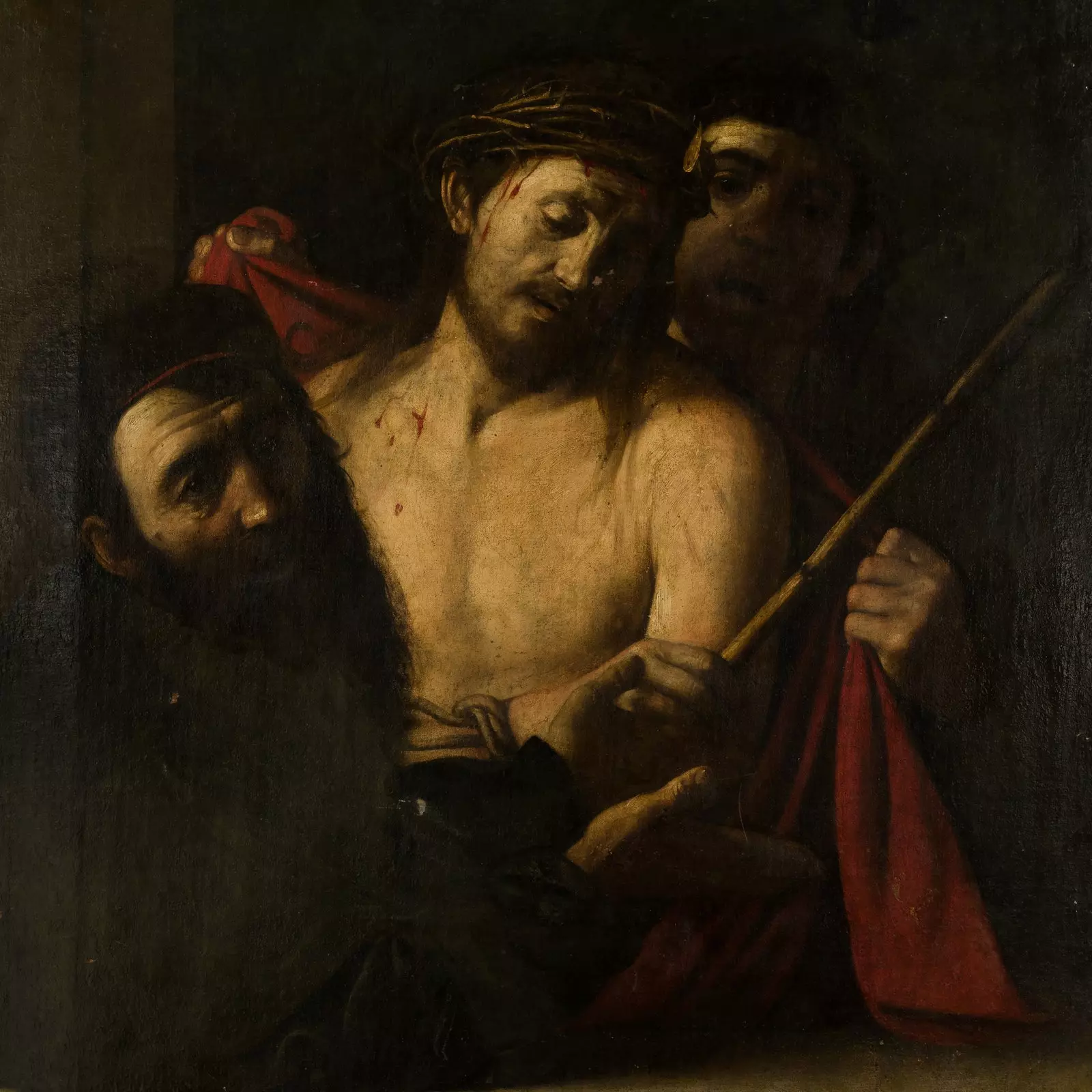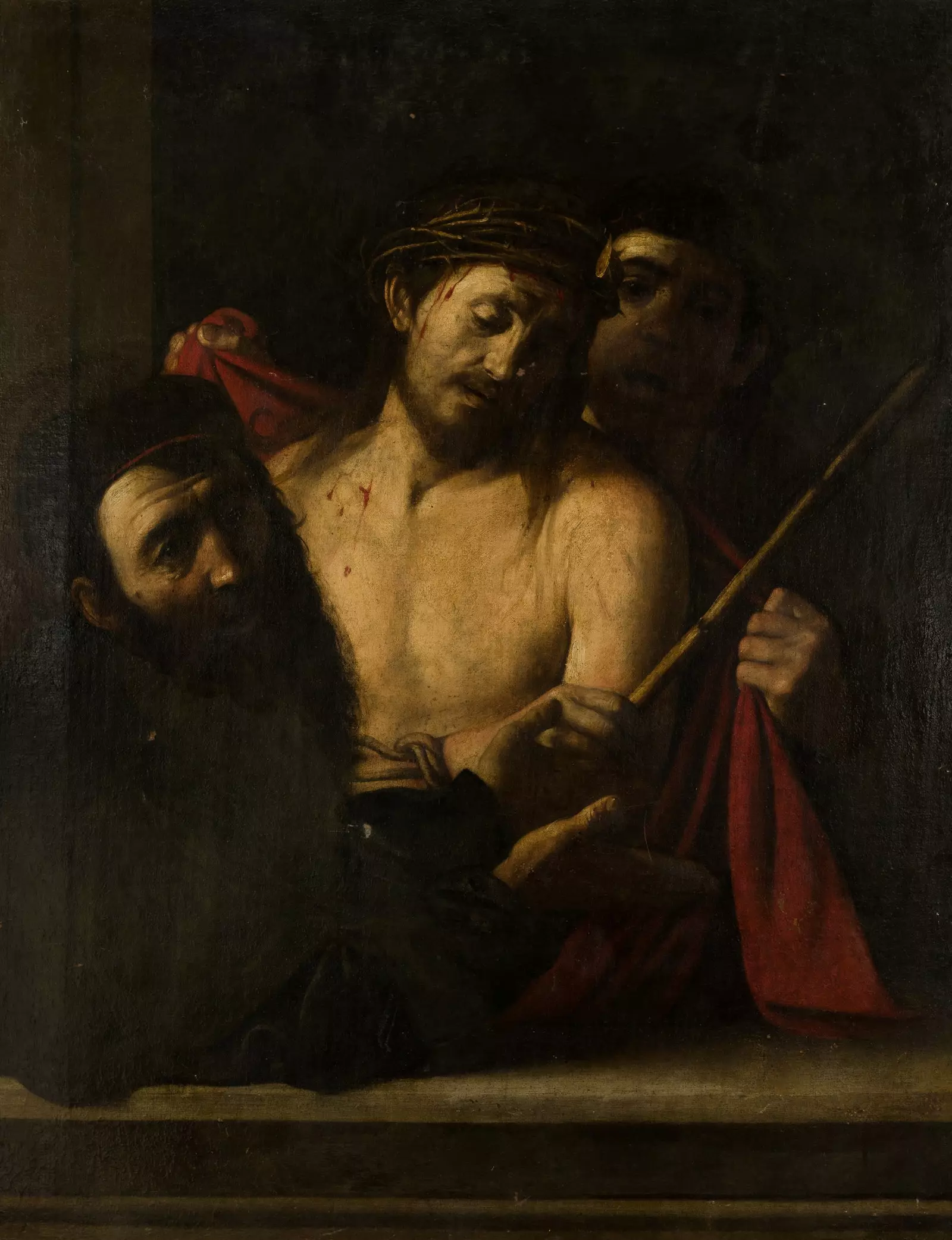
A new Caravaggio appears at the Ansorena auction house in Madrid
Ansorena auction house removed on April 7 a lot attributed to the circle of José de Ribera, which appeared in the catalog with a starting price of 1,500 euros . The reason? It could be a work of Michelangelo Merisi da Caravaggio.
According to him Corriere della Sera, Sgarby , Italian art critic inclined to media controversy, he was warned of the existence of the possible work of Caravaggio which has finally appeared in the Ansorena auction . The reality is that other Spanish art dealers had no doubts when they received the catalogue. The offers have accumulated and the work has been withdrawn from sale.
WHY HAS THE WORK BEEN ATTRIBUTED TO CARAVAGGIO?
Despite the poor conservation of the canvas, Caravaggio's style gravitates on the image . The accentuated chiaroscuro , the painter's trademark, establishes a dramatic effect that is manifested in the clarity of the body of Christ, highlighted against the brown background.
The side lighting It partially shows the faces of the other two figures, which reflect the master's own realism. Attention is drawn to the mastery in representation of the hands and the way the fingers hold the cloak and the staff.
But these observations are not conclusive. Both the painter's assistants and followers reproduced his way of doing things. There are voices that deny the attribution. Nicholas Spinosa , an expert on the period, affirms that it is most likely a high-quality oil painting by a Caravaggio painter.
Faced with Spinosa's skepticism, Cristina Terzaghi has told Condé Nast Traveler that she is very positive about the authenticity of the piece . Terzaghi, considered one of the highest authorities on Carvaggio's work, has come to Madrid to analyze the piece and has held a meeting with those responsible for the Prado Museum . While waiting for the restoration and technical tests, the expert believes that it is a work by the master.
A POSSIBLE COMMISSION FROM CARDINAL MASSIMI
Caravaggio arrived in Rome in 1592 . His talent and a dramatic vision led him to the circle of Cardinal del Monte, one of the nuclei of Roman artistic creation. Despite his fondness for taverns and street brawls, his fame grew to make him one of the most celebrated painters in the city.
In full maturity of his style, in 1605, Cardinal Massimo Massimi summoned three painters in competition to represent an Ecce Homo . One of them was Caravaggio . An autograph note by the artist is preserved in the Massimi family archive: “I, Michel Angelo Merisi di Caravaggio, oblige myself to appear before the illustrious Massimo Massimi for having been paid for a painting of value and greatness like the one I already did of the coronation of Christ.” It was one of the last works he painted in Rome. Months later, the murder of Ranuccio Tomassoni forced him to flee to Naples.
Testimonies of chroniclers of the last third of the 17th century indicate that the Ecce Homo had traveled to Spain . It is likely that it was given by Massimi to his assistant, Monsignor Innocenzo, when he was sent as apostolic nuncio to the Spanish court.
Italian opinion has opted for this possible origin of the piece. Nevertheless, Cristina Terzaghi offers a second possibility.

A new Caravaggio appears at the Ansorena auction house in Madrid
THE EXPERT'S OPINION
According to Terzaghi both the style and the format of the work correspond to the Neapolitan stage of Caravaggio . Despite the search and arrest warrant issued by the Roman authorities, the painter enjoyed the protection of the city's aristocracy.
Terzaghi states that he The work could have been part of the collection of García de Avellaneda, Viceroy of Naples , from which Salomé comes with the head of Juan Bautista, today in the Royal Palace of Madrid. According to the viceroy's inventory, he owned one hundred and eighty-three paintings, including works by Raphael, acquired in Italy.
It will be necessary to return to this inventory to verify if the Ecce Homo from Madrid belonged to his collection. Terzaghi states that Caravaggio's technique varies according to the time , and that technical tests will provide valuable information.
the researcher Olive Sartogo , who carried out a study on the attributions to Caravaggio in auction sales during the last decade, points out the difficulty of reaching a conclusion on technical criteria , since many of the copies were made in the master's own workshop, with the same materials and pigments.
Before this question Cristina Terzaghi is firm: the criterion lies in the creation , in the genius of the artist appreciated by the expert eye and supported by solid research. The process of attribution of the Ecce Homo of Madrid is announced to be long and full of controversy.
